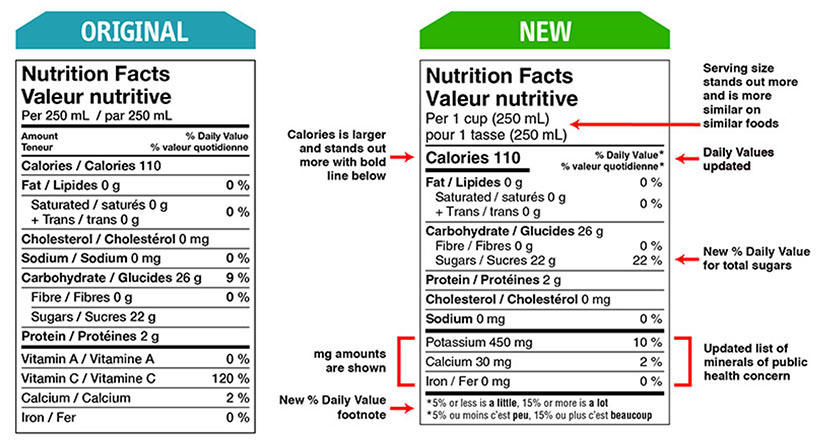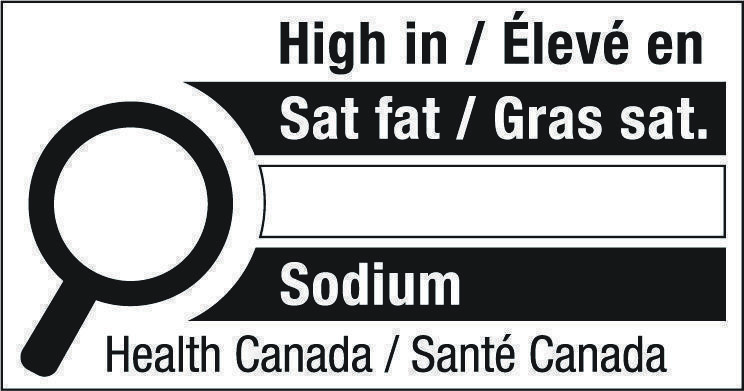Food packaging can be perplexing, and although most of us know the basics of nutrition, or at least what’s good for us, sometimes, it can be hard to tell what’s even in the food we eat to begin with, (especially with modern food processing thrown into the mix).
Looking at these labels, we might interpret the nutritional information as nothing more than a series of random numbers and values, along with the name of some scary sounding chemicals that almost certainly don’t belong in our bodies!... Or do they? It’s all a bit confusing.
If only there was a helpful guide that explained how to navigate these food labels in an easy step-by-step process so that you can eat what you want without worrying about eating something unwanted…
Thankfully there is, and it’s the Superprof blog to the rescue with this article which will explain the ins and outs of nutrition labels, allowing you to snack with confidence once again.
Let’s get right into it!


Anatomy of the Food Label: How to Read Nutrition Labels
Here in Canada, packaged food is required to have a nutrition label which describes several characteristics of the product contained. Individual raw products, such as unprocessed fruit, single cuts of meat and some waters and spices aren’t actually required to have such labels.
Let’s look at the constituents of the Canadian food label by going top to bottom, step by step:

| Step 1: What’s in the box? | Bilingual labelling | As Canada is home to both English and French as its main languages, nutrition labels are expected to display both languages in most places. |
|---|---|---|
| Step 2: How much should I eat? | Serving Size | Different to the total size/volume of the product, which is often elsewhere on the packaging, nutrition labels must display a recommended serving size, indicating how much a person should consume of the product per meal. |
| Step 3: How much energy will this give me? | Calories | Labels must include a clear indication of the calories included in one serving of the product. Be careful as this might be just a fraction of the total calories contained in a pack. |
| Step: 4: Is this food nutritional? What nutrients does it contain? | Daily Values of Key Macro/Micronutrients (Fats/Carbohydrates/Proteins/Cholesterol, [not an essential nutrient], /Sodium/Potassium/Calcium/Iron) | These values are expressed as a percentage value of the daily recommended intake for a healthy adult. Make sure you adjust these based on your height, metabolism and other factors that affect your intake. |
| Step: 5: Is this a little or a lot? | Guide for Intake | Updated Canadian nutrition labels are also required to include some guidance for consumers, stating that less 5% of reference intake is a little, and over 15% is a lot, for a single food. |
While this is the list of requirements for a Nutrition facts label, products are also expected to include a list of ingredients. This is because many of the compounds and elements, especially the controversial ones, do not register high values on the nutrition label and might manifest their negative traits in other ways.
Examples of things that this requirement catches out are unhealthy preservatives which manufacturers put in food to ensure a long shelf life, and it often can cause long term detriments to consumer health.
Also included are additives and flavourings which are used to ‘enhance’ the flavour of a product, without contributing to its caloric content or nutritional information.
These chemicals are very often more noisome for our health than the alternative, which is taking on a few extra calories that we could always burn off with some exercise.
Another requirement for Canadian food packaging is the ‘Canadian Nutrition Symbol’.
This is not necessary for all foods, especially those which comply with healthy amounts of each reference intake, it is specifically for foods which exceed a certain threshold of some nutritional element, i.e. too much saturated fat, or perhaps too much sugar or sodium.
The Symbol is characterized by a looking glass / magnifying glass, which rightfully connotes scrutiny. On the right of the label is featured 3 bands, which are black and labelled if their threshold is exceeded.
The Canadian Nutrition Symbol looks like this:

History of the Canadian Nutrition Label:
In the past, especially before the advent of supermarkets, mass transit and advances in preservatives and additives, it wasn’t such a concern in most parts of the world to indicate the nutritional values on foodstuffs.
However, throughout the late 20th century, as these technologies and traditions emerged, along with increased insight into nutritional science, it became an increasing public concern to know what manufacturers were putting into our food.
The 1986 Food and Drug act would introduce the Nutrition Label to Canadians as a mandatory part of many packaged foods. As the new Millennium approached, reforms and amendments to this act would steadily increase the strictness and comprehensiveness of the required information on such labels.
While there might have been initial push back to some of these changes, when we fast-forward to modern times, there’s been no looking back. Today, we are so used to seeing these nutrition labels that we would find it strange to look at packaging that didn’t include them.
Now thanks to this guide, you should hopefully be able to make perfect sense of them too!
Marketing Vs Reality: The Truth Behind ‘Healthy’ Products
It’s all too common today to see companies pander to the trends and desires of the consumer market. As healthy eating becomes increasingly popular, it’s no surprise that the corporate world is trying to capitalize on the new buzzwords associated with such a lifestyle.
As consumers, we need to be on the lookout for the difference between genuinely healthy products and products which are seeking the benefits of advertising themselves as healthy, while hiding poor nutrition underneath.
To make these distinctions, we consumers need to be equipped with a good understanding of food labels and nutritional information. Armed with this knowledge, we can become the judge and jury of our own diet and take back control over what we’re putting into our bodies.
Before we look at the labels themselves, let’s examine the marketing… What are some telltale signs of a misleading label?
Zero Sugar? Yeah, no…
One of the key signifiers of a false health food (or drink), is when the packaging claims to be/have ‘zero’ of something. We’ve grown accustomed to it, with popular products like ‘Diet Coke’ and even less subtly ‘Coke Zero’. Yet, some people erroneously assume that these products are automatically better than their traditional alternatives just because of this wording.
Health experts have recently been claiming the opposite, some say that these types of products achieve these seemingly impossible figures by using anything from worse substitutes to even carcinogenic chemicals.
These products also instill the notion that sugar and fat are automatically bad, or should be avoided in your diet, however any nutritionist worth their salt will remind you that sugar and fat are actually essential to a healthy diet. Moderation is the name of the game, after all.
There’s nothing wrong with having a sugary drink or a high fat snack once in a while, as long as you don’t overdo it.

Colours vs the Brain
Our brains are wonderful machines that turn patterns and connections we make into a vivid reality… Unfortunately, marketers know this too and use our common associations with form and colour to steer us towards certain consumer choices.
This is certainly true when it comes to ‘healthy’ foods. Adding colours which we associate with health and medicine, or even colours we see often in nature, makes our brains associate the packaging with good health, even if the goods inside are the complete opposite!
Another similar tactic is even more disingenuous than simply tricking our colour associations.
Many fake health foods use pictures of fruit and vegetables on their packaging, but upon close inspection of their labels, we find that they contain the bare minimum percentage of real fruit, just enough to avoid legal scrutiny.
Misleading Language
Sometimes marketers don’t even resort to tricks but instead mislead consumers directly, usually by writing claims that the law doesn’t require them to substantiate.
If you keep an eye out, you’ll see words like ‘healthy’, ‘organic’, ‘natural’, ‘green’, and many others slapped onto food packaging, but they are often just that… Words; words which mean nothing more than a better profit margin for the clever marketers who wrote them.
Afterword
Thank you so much for reading this guide on Canadian Nutrition Labels. We hope you find them a little less confusing than they might have seemed before.
For more nutrition know-how, check out some of our other articles right here on the Superprof Blog.
Why worry about nutrition when you could become an expert yourself? With the first lesson offered free, Superprof can get you in touch with the ideal tutor based on your budget, schedule and location, in order to fast track your understanding of nutritional science and a plethora of other subjects.
Try it out!
















